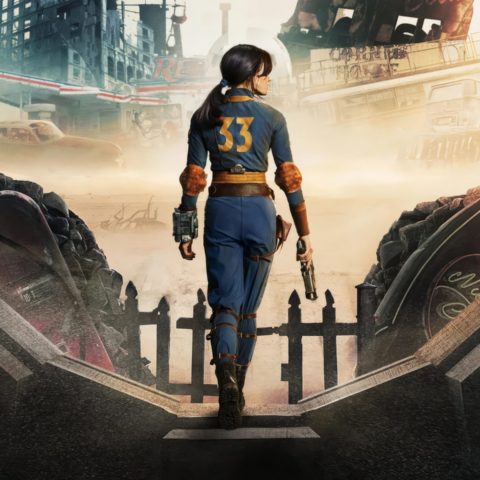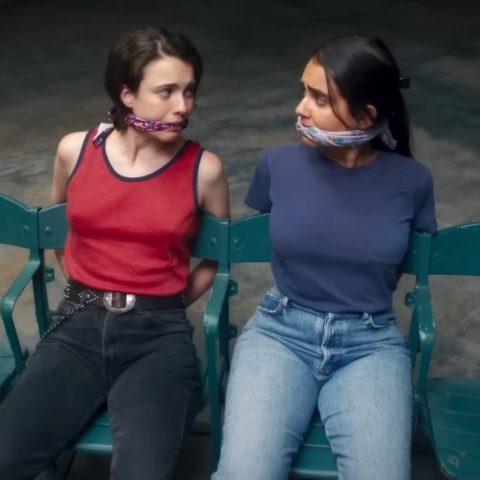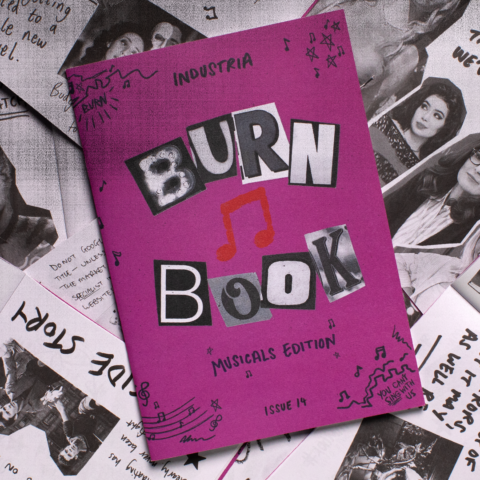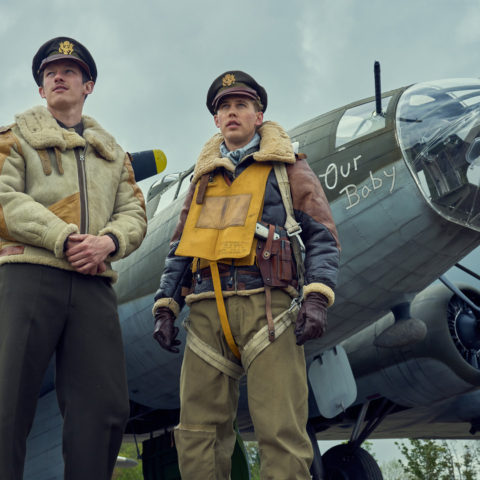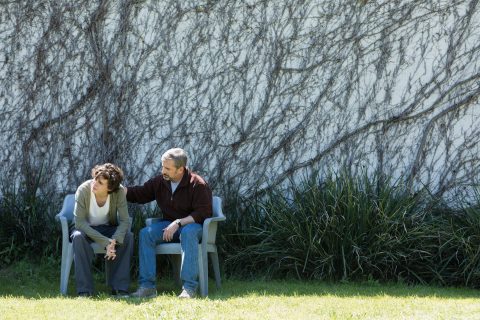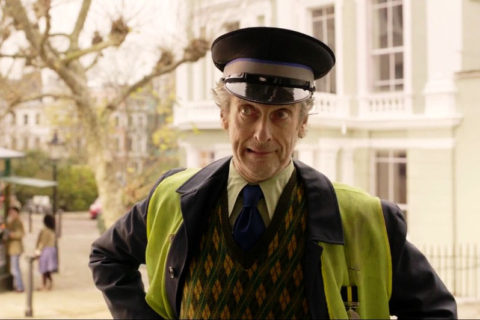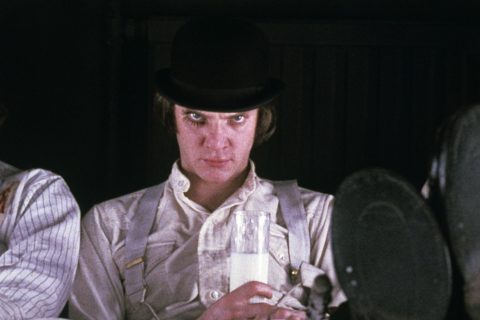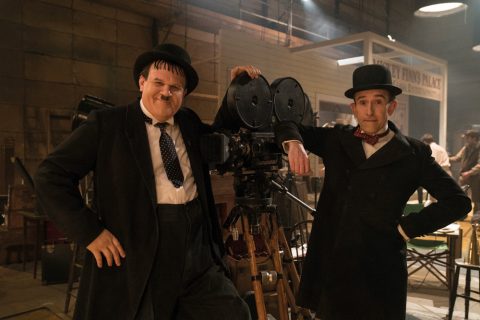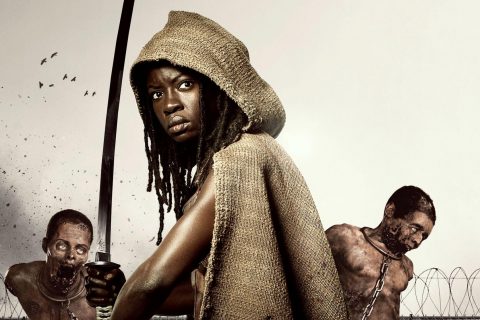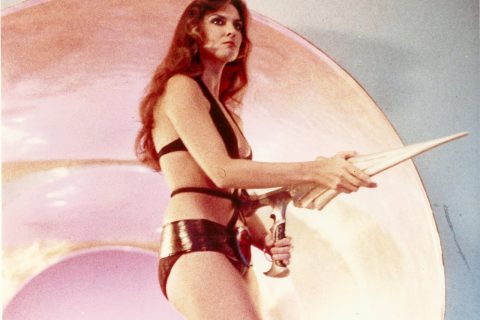The Greatest Movies Never Made
David Hughes, author of new book Tales from Development Hell, on five planned Hollywood productions which didn’t quite go to plan
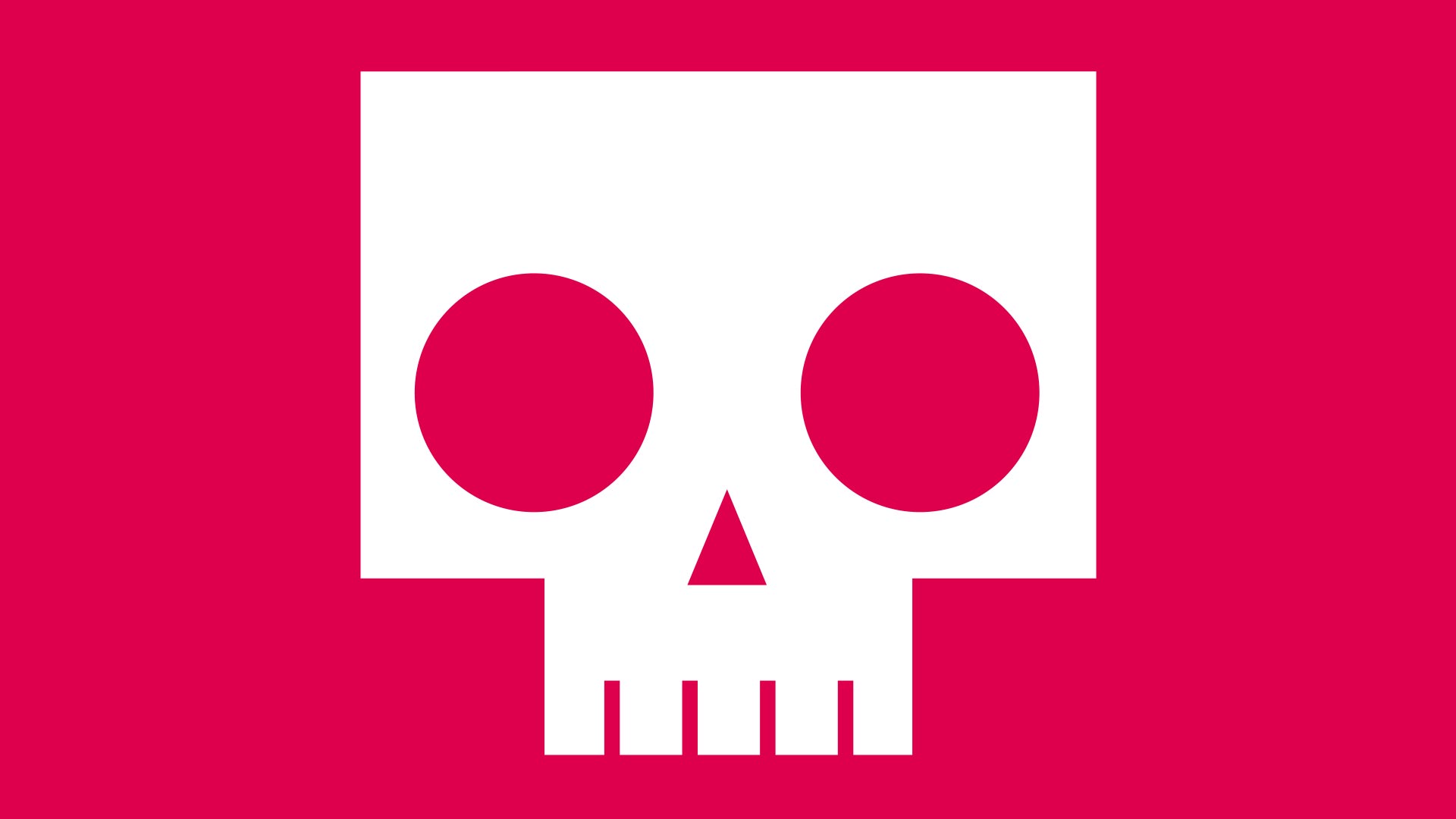
-
Ridley Scott’s The Hot Zone
The publication of “Crisis in the Hot Zone”, a 1992 New Yorker magazine article recounting a near-outbreak of the deadly Ebola virus in America, foiled by a husband-and-wife team of army scientists, Jerry and Nancy Jaax, drew major interest from some big Hollywood players. They included producer Lynda Obst (The Fisher King) who optioned journalist Richard Preston’s story, quickly attracting such A-listers as Robert Redford, Jodie Foster and director Ridley Scott to the material.While Scott began working with a series of writers to turn the article into a dramatic feature film for 20th Century Fox (where Scott had a deal), rival producer Arnold Kopelson (The Fugitive) began setting up a fictionalized take on the same material, figuring that, legally speaking, facts were facts, and could not be owned by anyone – so long as he didn’t draw from the source material, or use the Jaax’s, nothing could stop him. Meanwhile, Redford began working with his own ‘pet’ writer, Richard Friedenberg (A River Runs Through It), to beef up his part, feeling that the role of Jerry Jaax was being eclipsed by that of his screen wife. Of course, by the time Jodie Foster – who had only recently won her second Academy Award, for The Silence of the Lambs – read this draft, in which her role had been significantly reduced to bump up Redford’s screen time, she left the project, closely followed by Ridley Scott. “I would have loved to work with Jodie,” Scott commented, shortly before the actress bowed out of another Scott-directed project, Hannibal. “I also thought it was one of those rare projects, like Thelma & Louise, that was actually about something.” Despite the fact that Preston had, by now, turned his article into a non-fiction bestseller, The Hot Zone was cooling fast. Meanwhile, work continued apace on Kopelson’s rival project, now titled Outbreak, and as fast as The Hot Zone was hemorrhaging talent, Outbreak was attracting it: by 1994, Dustin Hoffman, Rene Russo, Morgan Freeman and Kevin Spacey had all come aboard, with The Perfect Storm director Wolfgang Petersen at the helm. “I got the scripts on my desk the same day,” he said. “I decided to do Outbreak. Sometimes you can tell a better story with fiction.” Ultimately, it was Petersen’s film that won the race into production, and despite the fact that Preston himself dismissed its interpretation of the true-life story as ‘Curious George gets the Andromeda Strain’, it was a huge success.“We had Redford, Ridley Scott and a script in progress,” laments screenwriter Friedenberg. “That’s a lot to have. But instead of making it better, that just made everyone push to do a Hollywood number instead of an intelligent, thoughtful and honest film.” With Steven Soderbergh’s star-studded pandemic thriller Contagion proving popular with audiences, however, The Hot Zone may yet survive, mutate and flourish. After all, as Preston has pointed out, “It’s not like Alien, where people could shrug it off as science fiction. Now they’d be seeing someone come apart before their eyes and realising that the virus could be sitting next to them in the theatre. It could be anywhere.”
-
Smoke and Mirrors
On a Friday in February 1993, Hollywood was buzzing with more than just the usual combination of traffic, cell phones and celebrity gossip. At two separate studios in Burbank and several high-profile agencies, the word-of-mouth concerning a 128-page script by two unknown writers was increasing from ‘buzz’ to cacophony, as executives at several major studios engaged in a bidding war to secure the rights to what had become, almost overnight, the most sought-after script in Hollywood.The script at the centre of all this excitement and activity was Lee and Janet Scott Batchler’s Smoke and Mirrors, a historical epic written ‘on spec’, recounting the true-life story of a trip to Algeria which Jean-Eugene Robert-Houdini, the father of modern stage magic, made in the 19th Century in order to expose an Arabian ‘magician’ as a charlatan. “It was a movie-movie,” remembers Alan Gasmer, the agent at the centre of the feeding frenzy, “like Romancing the Stone, Star Wars or Indiana Jones, with a Lawrence of Arabia scope to it because it had the desert and castles and such. It came down to what studios had the nerve and the big bucks to pony up and say, ‘We want to play this game.’” Ultimately, Walt Disney won the bidding war, paying the Batchlers a cool $1 million. Work was to begin immediately.Within weeks, Disney had amassed a formidable team of producers, including Cinergi’s Andrew G. Vajna and longtime Spielberg collaborators Kathleen Kennedy and Frank Marshall, and an A-list star: Sean Connery. “Sean was attached within days of the script being sold, as were Frank Marshall and producer Kathy Kennedy,” the Batchlers recall. “We met with Sean to get his notes, and spent months working with Frank and Kathy.” After several rewrites failed to produce a draft of the script that everyone could agree on, the Batchlers went away to write Batman Forever, leaving the project in the hands of numerous other screenwriters, all of whom failed to produce anything as magical as the fabled first draft – which, of course, nobody would dare to shoot ‘as is’. By the time the Batchlers came back, Cinergi had collapsed, leaving Smoke and Mirrors as insubstantial as its title.Little was heard from the project until 1999, when Michael Douglas became interested in the script as a potential vehicle in which he and his wife, Catherine Zeta-Jones, could appear together, under the direction of Mimi Leder (Deep Impact). Problems continued to plague Smoke and Mirrors, however, beginning with news of a rival project, The Magician’s Wife, adapted from the same source material, and set to star Oscar winners Geoffrey Rush and Kate Winslet. When that film failed to materialise, Smoke and Mirrors began to move forward. “They were in pre-production, location scouting in Morocco, and set to start shooting in January 2002,” Janet Batchler recalls. “And then 9/11 happened. We were told very authoritatively that Michael Douglas and some other people connected to the production were not going to go to some Islamic country to shoot a movie.” Before the dust had settled on Ground Zero, Smoke and Mirrors had vanished in a puff of smoke.
-
Darren Aronofsky’s Batman
Before Christopher Nolan was given the gig of rebooting Batman, almost every hot director in Hollywood was asked what they would do with the franchise.“I told them I’d cast Clint Eastwood as the Dark Knight, and shoot it in Tokyo, doubling for Gotham City,” says Darren Aronofsky, who was approached in 1999, after the success of his first film, π. “That got their attention.” Rather than adapt Frank Miller’s seminal series (and best-selling graphic novel) The Dark Knight Returns, however, Aronofsky opted to write an adaptation of another of Miller’s ground-breaking Bat-tales, the revisionist origin story Year One.“The Batman franchise had just gone more and more back towards the TV show, so it became tongue-in-cheek, a grand farce, camp,” says Aronofsky. “I pitched the complete opposite, which was totally bring-it-back-to-the-streets raw, trying to set it in a kind of real reality — no stages, no sets, shooting it all in inner cities across America, creating a very real feeling. My pitch was Death Wish or The French Connection meets Batman. In Year One, Gordon was kind of like Serpico, and Batman was kind of like Travis Bickle,” he adds, referring to police corruption whistle-blower Frank Serpico, played by Al Pacino in the eponymous 1973 film, and Robert De Niro’s vigilante in Martin Scorsese’s Taxi Driver. Aronofsky had already acknowledged the debut his first film owed to the look of Miller’s Sin City; in addition, the director already had a good working relationship with the writer/artist, since they had collaborated on an unproduced feature adaptation of Miller’s earlier graphic novel, Ronin. “Our take was to infuse the Batman movie franchise with a dose of reality,” Aronofsky says. “We tried to ask that eternal question: ‘What does it take for a real man to put on tights and fight crime?’”Ultimately, Warner Bros ultimately decided to pursue Christopher Nolan’s edgy-but-still-PG take on the Batman origin story, with Batman Begins, meaning that we’ll never see an amnesiac Bruce Wayne working in an underground auto repair shop, Catwoman as a prostitute working in a brothel (cat house – geddit?) across the street, or Wayne’s own version of the Batmobile, a souped-up Lincoln Continental with a school bus engine and Boss tyres. “I think Warners always knew it would never be something they could make. I think rightfully so, because four year-olds buy Batman stuff, so if you release a film like that, every four year-old’s going to be screaming at their mother to take them to see it, so they really need a PG property. But there was a hope at one point that, in the same way that DC Comics puts out different types of Batman titles for different ages, there might be a way of doing the movies at different levels. So I was pitching to make an R-rated adult fan-based Batman, a hardcore version that we’d do for not that much money, raw and edgy, and make it more for fans and adults.”
-
Neil Gaiman’s The Sandman
In September 1987, DC Comics editor Karen Berger called Neil Gaiman, one of the UK’s most promising comic talents, and asked if he would be interested in reviving a long-forgotten DC character, ‘the Sandman’, and taking him in a radical new direction. After a few false starts, Gaiman finally arrived at the premise and commenced on characters which would, over the course of the series’ seventy-five-issue lifetime, become familiar to millions of fans worldwide: Morpheus, personification of the dream world where we spend a third of our lives; older and more powerful than the gods, he is also one of the seven ‘Endless’, the others being his brothers Destiny and Destruction, and sisters Death, Desire, Delirium and Despair.The first issue of Gaiman’s The Sandman appeared in comic stores in December 1988, signalling the arrival not only of one of the most important, critically acclaimed and commercially successful titles of the era, but also, in its author, of a significant new talent. “Looking back, the process of coming up with the Lord of Dreams seems less like an act of creation than one of sculpture,” Gaiman wrote in the afterword to the first collection of tales from The Sandman, entitled Preludes & Nocturnes. “It was as if he were already waiting, grave and patient, inside a block of white marble, and all I needed to do was chip away everything that wasn’t him.”Six months after the first issue hit the shelves, Tim Burton’s Batman exploded at the box office, leading Warner Bros to ransack its subsidiary, DC Comics, for any “dark” and “gritty” comic book property that might lend itself to a film adaptation. The search led the studio to Gaiman’s door, despite the fact that The Sandman’s sole resemblance to Batman was (a) his story was told in consecutive panels, and (b) his hair looked a bit like Tim Burton’s. Although Gaiman insisted that trying to make a Sandman movie would be “like taking a baby and cutting off both of its arms and one of its legs and nose and trying to cram it in this little box, and filling the rest of the box up with meat,” Hollywood insisted. “These are not people who particularly care about Sandman,” he says. “They want it to be the new Batman and Robin, which is a little like deciding you want to make David Copperfield the new Batman and Robin.”Over the next two decades, Gaiman watched his great epic comics opus endure all the torments of development hell, “Beginning with Ted Elliott and Terry Rossio, the great writers who did Pirates of the Caribbean and such, doing these really very good drafts of a script which the producer at the time, Jon Peters, famously did not ‘get’. Pulp Fiction co-writer Roger Avary was brought on as director and he did a draft of their script, again it was very good, he went in, he showed them Jan Svankmayer’s Alice and said, ‘I want the dreamy sequences to look like this,’ and was fired. And then scripts came in and they got worse and worse.” Ultimately, Gaiman got the rights back. “I think the producers figured I wasn’t a team player and didn’t ‘get’ that whole Sandman thing.”
-
Arnold Schwarzenegger in Crusades
Before Gladiator revived the historical epic, paving the way for everything from Troy to King Arthur and Spartacus: Blood and Sand, Arnold Schwarzenegger manfully struggled to get a bloodthirsty saga of his own off the ground. Set in the 11th century, and written by the author of The Wild Bunch, Crusade was the story of a thief, Hagen (Arnie in Conan mode), who escapes punishment by faking a miracle (branding himself with a giant cross), and becomes a holy warrior during the First Crusade, ultimately siding with Muslims when he realizes the Crusaders are raping, pillaging and massacring their way around the Middle East in the name of God. It was Arnie who first came across the story, bringing it to the attention of director Paul Verhoeven during the making of their sci-fi smash Total Recall. “There were touches of lightness and romanticism and there are often funny scenes,” Verhoeven says of the project, “but it’s not a happy story. It’s cruel and it’s violent — my kind of ultra-violence that I’ve displayed in many movies — but there is also a lightness and tenderness, and I think with Arnold it would have worked for an audience.”Carolco, the company that had backed Verhoven’s Total Recall, thought so too. Crusade officially entered pre-production in early 1993, with Schwarzenegger being joined by Robert Duvall, John Turturro, Christopher McDonald and Jennifer Connelly. With shooting scheduled to begin in the summer of 1994, however, Carolco began to feel the aftershocks of its production profligacy, with expensive misfires such as Richard Attenborough’s Chaplin presaging a general downturn in the company’s fortunes, despite the strong box office performance of such high-profile pictures as Total Recall, Basic Instinct and Terminator 2: Judgment Day. “Carolco went through a terrible time,” Verhoeven recalls. “They had two big movies in development at the same time,” referring to Crusade and Cutthroat Island, the pirate epic which ultimately sank the company in a sea of red ink. “Ultimately they realised that, in the circumstances they were in financially, they could not do both. In my opinion, they made the wrong choice because they thought Michael Douglas would be in Cutthroat Island, but he backed off, and instead of rotating around to Crusade, they continued along that track, and got Matthew Modine.” When Cutthroat Island flopped, Carolco went into bankruptcy, still owing Schwarzenegger his full salary for Crusade. Eventually, the actor reached a settlement with the producers that was mutually agreeable: the actor would take over all rights to the screenplay, without any of the negative costs accrued against it, in return for forfeiting his payday.“Arnold’s never given up on the project,” Verhoeven says today; and neither has its one-time director. “I think it’s a great script. I don’t know if Arnold wants to do it, or if he still wants to do the same part. I’ve heard rumours that he might want to change the script a little bit, because of course he’s older than that now. He might have to adapt it a little bit so he doesn’t have to play a thirty year-old. But I think that it can be adapted, and I fully agree it’s one of the greatest scripts ever written.”
Tales from Development Hell: The Greatest Movies Never Made? by David Hughes is published by Titan Books

